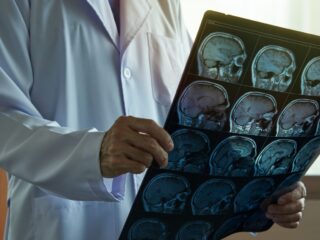
Have you ever wondered about alternative treatments for depression that don’t involve medication or invasive procedures? Transcranial Magnetic Stimulation (TMS) therapy might just be the answer you’re looking for. This innovative approach is making waves in mental health care by offering a non-invasive solution to those struggling with depression, especially when traditional methods fall short. By using magnetic pulses to stimulate specific areas of the brain, TMS aims to improve mood regulation without the need for anesthesia or surgery. It’s a fascinating development in the field, providing hope and relief for many who have been searching for effective treatment options.
Understanding TMS Therapy
Experts at BestMind Behavioral Health Center say that Transcranial Magnetic Stimulation (TMS) therapy is a groundbreaking approach in the field of mental health treatment, particularly for those battling depression. This non-invasive procedure utilizes magnetic pulses to stimulate nerve cells in the brain, specifically targeting areas associated with mood regulation. One of the most appealing aspects of TMS is its ability to offer relief without the need for anesthesia or surgical intervention, making it a convenient option for many patients.
Approved by the FDA in 2008, TMS therapy has become a beacon of hope for individuals suffering from treatment-resistant depression. Traditional treatments like medication and psychotherapy don’t always yield results for everyone, leaving a significant portion of patients seeking alternative solutions. TMS therapy steps in as an effective option by directly addressing the abnormal function of nerve cells linked to depression. Its benefits include:
- Non-invasiveness: No surgery or anesthesia required.
- FDA approval: Ensures safety and efficacy.
- Focus on treatment-resistant cases: Offers hope where other treatments have failed.
This innovative therapy not only provides a new avenue for managing depression but also empowers patients to continue their daily routines without significant disruption. As research continues to evolve, TMS stands out as a promising tool in the fight against mental health disorders.
How Does TMS Therapy Work?
Transcranial Magnetic Stimulation (TMS) therapy is a fascinating process that leverages the power of magnetic pulses to target specific areas of the brain, such as the prefrontal cortex. This area is crucial for mood regulation and is often underactive in individuals with depression. By stimulating these nerve cells, TMS aims to enhance brain activity, potentially alleviating symptoms of depression and other mental health conditions. The procedure is non-invasive, meaning it doesn’t require any surgical intervention or anesthesia, allowing patients to remain fully awake and comfortable throughout the session.
A typical TMS therapy session involves sitting in a comfortable chair while a technician places a magnetic coil above the targeted brain region. The treatment usually lasts between 30 and 60 minutes and is conducted five days a week over four to six weeks. This frequency ensures that the brain receives consistent stimulation, which can lead to more effective results. One of the significant advantages of TMS therapy is its minimal disruption to daily life; patients can drive themselves home after each session and continue with their regular activities without any downtime. Additionally, unlike some other treatments for depression, TMS does not interfere with memory or cognitive functions, making it an appealing option for many seeking relief from persistent symptoms.
Benefits of TMS Therapy
Transcranial Magnetic Stimulation (TMS) therapy offers a range of benefits, particularly for individuals who have not found relief through traditional treatments like medication or psychotherapy. One of the standout advantages of TMS is its reduced risk of side effects compared to antidepressants. While medications can lead to a host of unwanted symptoms such as nausea, fatigue, and insomnia, TMS provides a more targeted approach without these systemic side effects. This makes it an appealing option for those who are sensitive to medication or have experienced adverse reactions in the past.
Another significant benefit of TMS therapy is that it does not interfere with daily activities. Patients can drive themselves to and from appointments and continue their normal routines without disruption. The non-invasive nature of TMS means there’s no need for anesthesia, allowing individuals to remain fully alert during sessions. Furthermore, unlike some other treatments, TMS does not cause significant memory impairment, making it a safer choice for long-term mental health management. For those who have struggled with treatment-resistant depression, TMS offers hope by potentially improving symptoms when other methods have failed.
Conditions Treated by TMS Therapy
Transcranial Magnetic Stimulation (TMS) therapy is not just limited to treating depression; it offers promising results for a variety of other conditions. For individuals struggling with Obsessive-Compulsive Disorder (OCD), TMS can be a game-changer. By targeting the prefrontal cortex, TMS helps reduce the hyperconnectivity between this area and the striatum, which is often associated with severe OCD symptoms. Similarly, for those dealing with anxiety, TMS therapy can help by decreasing nerve cell activity in the prefrontal cortex, potentially easing anxiety symptoms that often accompany other mental health disorders.
TMS therapy also shows potential in alleviating symptoms of Post-Traumatic Stress Disorder (PTSD). By focusing on the prefrontal cortex, which plays a role in processing fear and worry, TMS can help manage PTSD symptoms effectively. Moreover, neurological disorders like Parkinson’s disease benefit from TMS as well. The therapy aids in normalizing brain connectivity, which can improve motor dysfunction issues such as tremors and balance problems. This non-invasive treatment extends its benefits to various conditions, offering hope where traditional treatments may have fallen short.
Potential Side Effects and Risks
When considering Transcranial Magnetic Stimulation (TMS) therapy, it’s important to be aware of the potential side effects and risks associated with the treatment. While TMS is generally well-tolerated, some individuals may experience mild side effects. Commonly reported issues include mild headaches and scalp discomfort, which typically diminish after a few sessions. These symptoms are usually temporary and can be managed with over-the-counter pain relief if necessary. Additionally, some patients might notice slight facial twitching or tingling sensations during the procedure, but these effects are generally short-lived.
Despite its non-invasive nature, TMS therapy does carry a low risk of more serious side effects, such as seizures. However, this risk is minimal—less than 1%—and clinics take extensive precautions to ensure patient safety. To minimize these risks, healthcare providers adhere to strict safety guidelines and conduct thorough assessments before starting treatment. Patients are carefully monitored throughout each session to promptly address any adverse reactions. By following these protocols, clinics aim to provide a safe and effective environment for individuals seeking relief through TMS therapy.
Who is a Good Candidate for TMS Therapy?
Transcranial Magnetic Stimulation (TMS) therapy is particularly beneficial for individuals grappling with treatment-resistant depression. These are people who have tried multiple antidepressants without experiencing significant relief or have encountered adverse side effects that make medication intolerable. TMS offers a promising alternative by directly targeting the brain’s prefrontal cortex, which is often linked to mood regulation. This non-invasive approach provides hope for those who have exhausted conventional treatments. Additionally, TMS therapy is suitable for individuals who prefer a treatment option that does not involve medication, thereby avoiding the common side effects associated with antidepressants, such as nausea and fatigue.
To qualify for TMS therapy, certain prerequisites must be met. Typically, candidates should be adults diagnosed with Major Depressive Disorder (MDD) that is severe and recurrent. It’s also essential that they have completed a sufficient course of evidence-based psychotherapy and have tried at least four different medications from two distinct classes without improvement. Moreover, individuals should be referred by their primary psychiatrist to ensure that TMS is an appropriate treatment option for their specific condition. Potential candidates include:
- Adults over the age of 18
- Those with a diagnosis of severe, recurrent MDD
- Individuals who have not responded to multiple antidepressant trials
- Patients seeking non-pharmacological treatment options
This comprehensive approach ensures that TMS therapy is administered to those most likely to benefit from its unique capabilities, offering a new avenue of hope and healing.
Summary
Transcranial Magnetic Stimulation (TMS) therapy is emerging as a revolutionary method in mental health care, particularly for individuals struggling with depression. This non-invasive treatment uses magnetic pulses to stimulate specific brain areas involved in mood regulation, offering a promising alternative for those who haven’t found relief through traditional methods like medication or psychotherapy. Since its FDA approval in 2008, TMS has provided hope for patients with treatment-resistant depression by directly targeting the abnormal nerve cell functions associated with the condition. The therapy’s non-invasive nature means no anesthesia or surgery is required, allowing patients to maintain their daily routines without significant disruption.
TMS therapy works by focusing on the prefrontal cortex, an area crucial for mood regulation that is often underactive in people with depression. During a typical session, patients sit comfortably while a technician places a magnetic coil over the targeted brain region. Sessions last between 30 and 60 minutes and are conducted five days a week over several weeks to ensure consistent brain stimulation. One of the major benefits of TMS is its minimal side effects compared to antidepressants, making it an attractive option for those sensitive to medication. Additionally, TMS does not interfere with memory or cognitive functions, allowing patients to continue their normal activities without interruption. This innovative approach extends beyond depression treatment, showing potential benefits for conditions like OCD, anxiety, PTSD, and even neurological disorders such as Parkinson’s disease.













